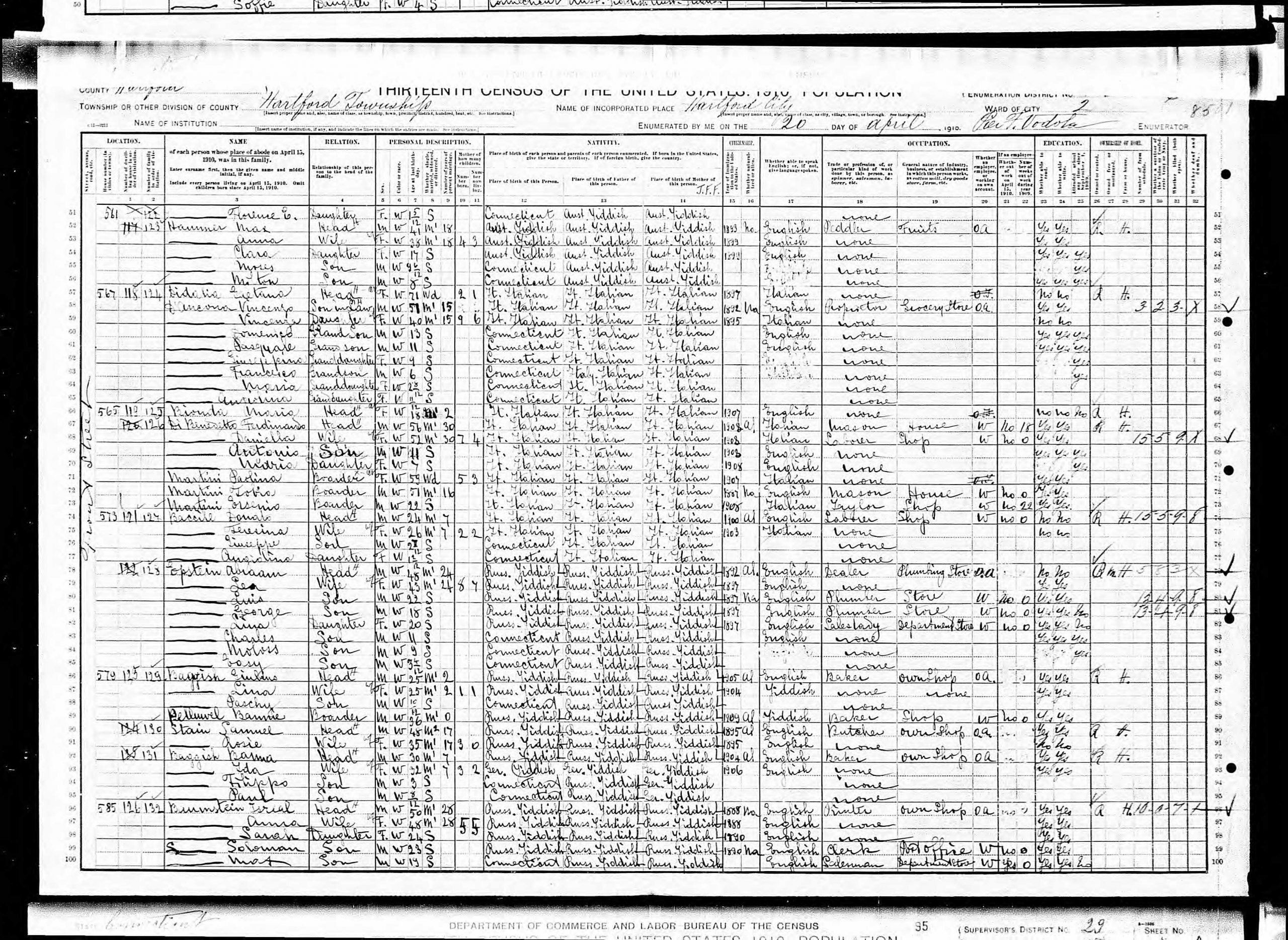Elizabeth Rose
Jewish Historical Society of Greater Hartford
TEACHER'S SNAPSHOT
Historical Background
Jews from Eastern Europe were among the thousands of “new immigrants” who settled in Connecticut cities around the turn of the 20th century. These immigrants were fleeing anti-Jewish violence and discrimination in Russia, Poland, and Romania, as well as seeking economic opportunity. They joined a much smaller group of Jews who had immigrated earlier in the 1800s from Germany and established a community in Hartford. Most of the new immigrants who came to Hartford between 1800 and 1920 lived on Hartford’s East Side, close to downtown. The busy neighborhood was home to Italian, Irish, and Jewish immigrants who lived in crowded apartment buildings. Many immigrants sold food and goods from pushcarts or opened small stores in the neighborhood. Jewish immigrants established their own synagogues and organizations to meet their needs in their new home.
D1: Potential Compelling Question
D1: POTENTIAL SUPPORTING QUESTIONS
- What did Jewish immigrants need to feel at home in Hartford?
- What elements of Jewish culture (religion, language, food) were most important to them?
- What organizations did they create to help their community?
D2: TOOL KIT
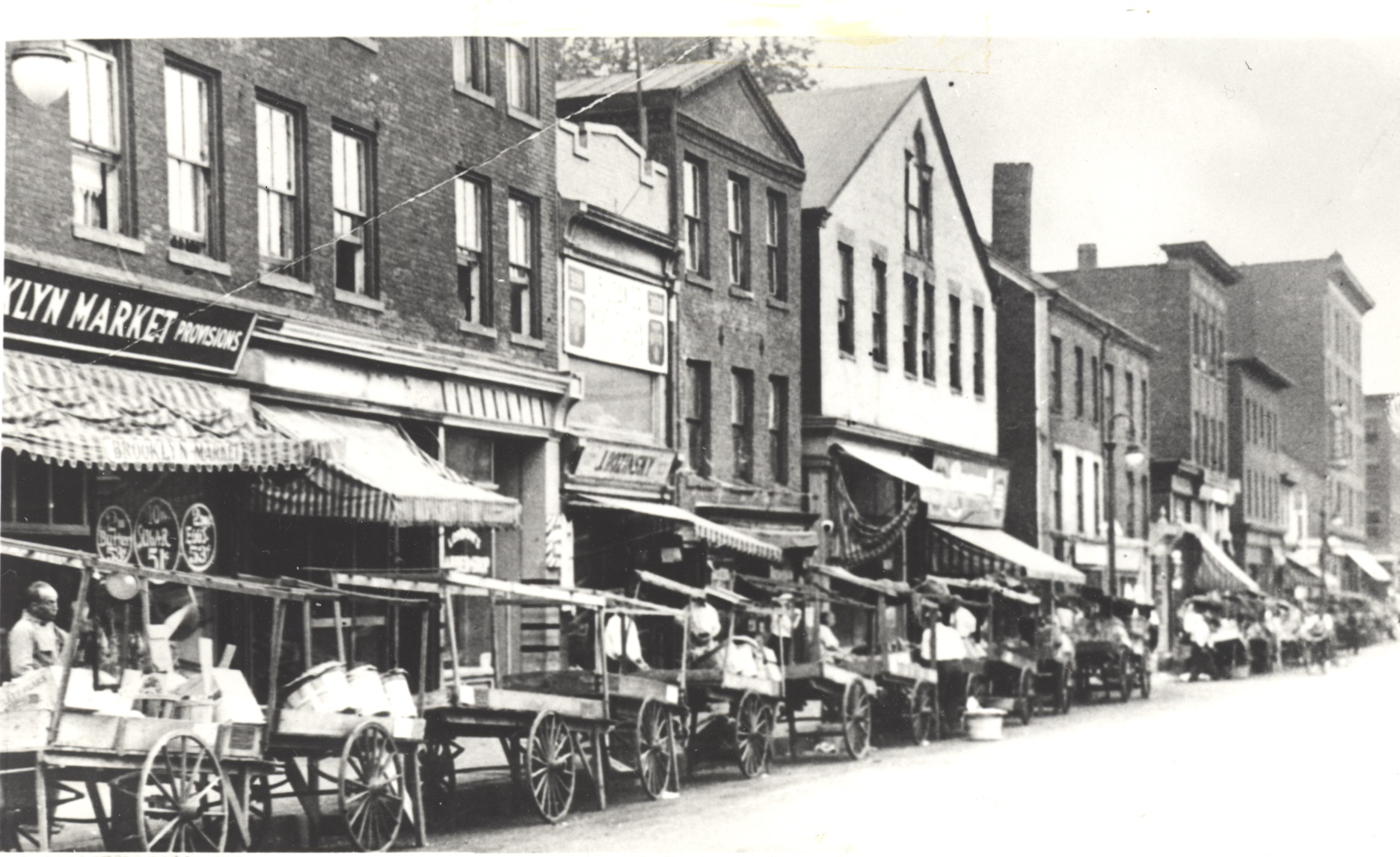
Pushcarts on Front Street. Hartford Times Collection, Hartford History Center, Hartford Public Library.
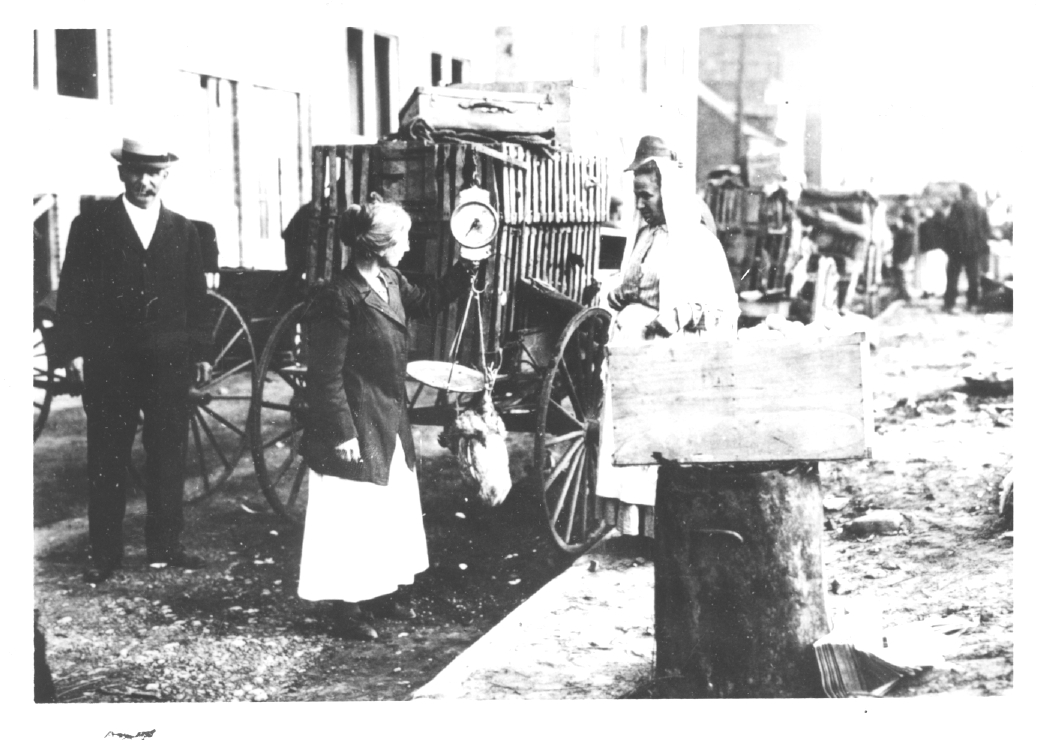
Chicken market, Charles Street, Hartford, c 1910. Jewish Historical Society of Greater Hartford.
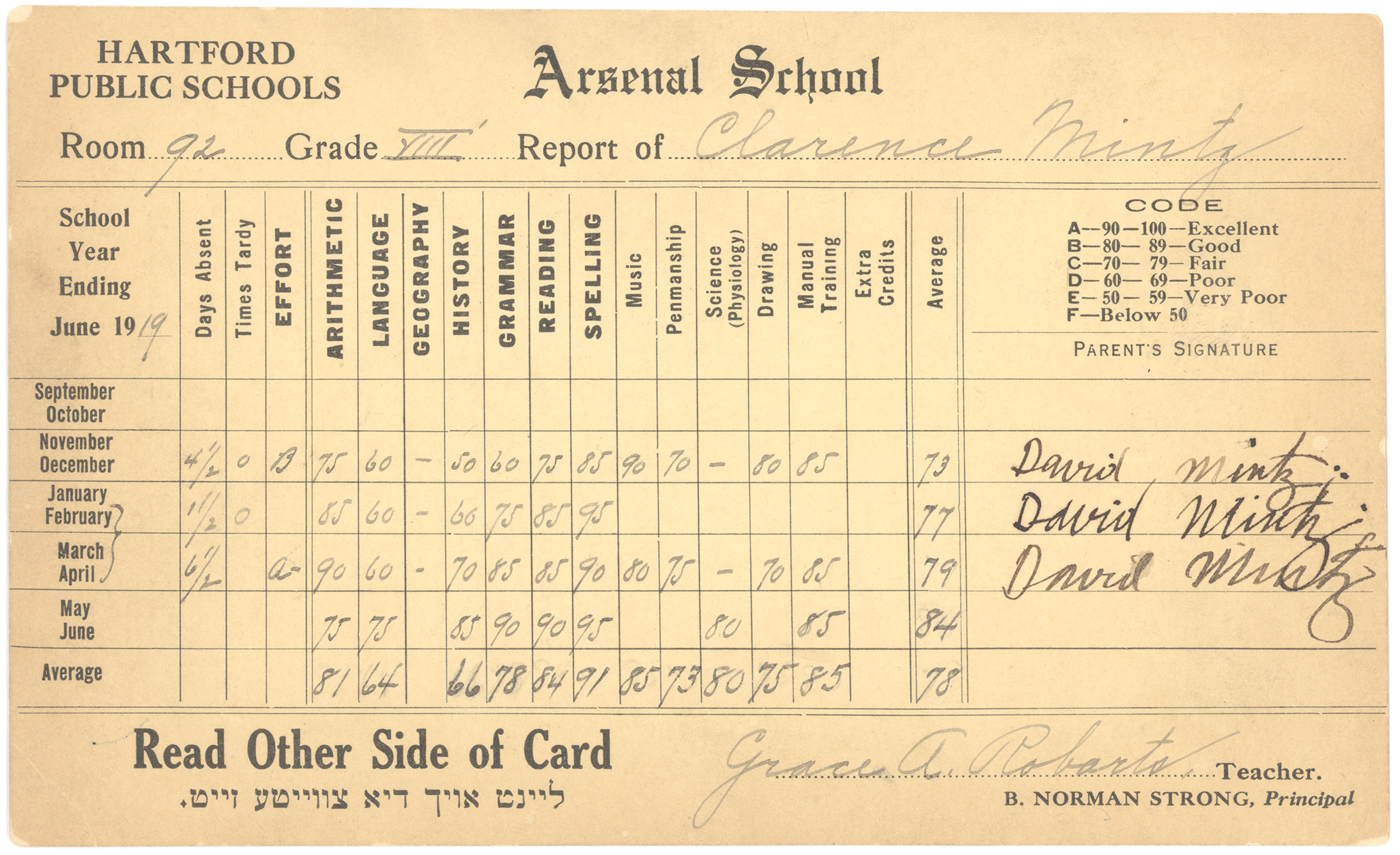
Report card from Arsenal School, Hartford, 1919. Jewish Historical Society of Greater Hartford.
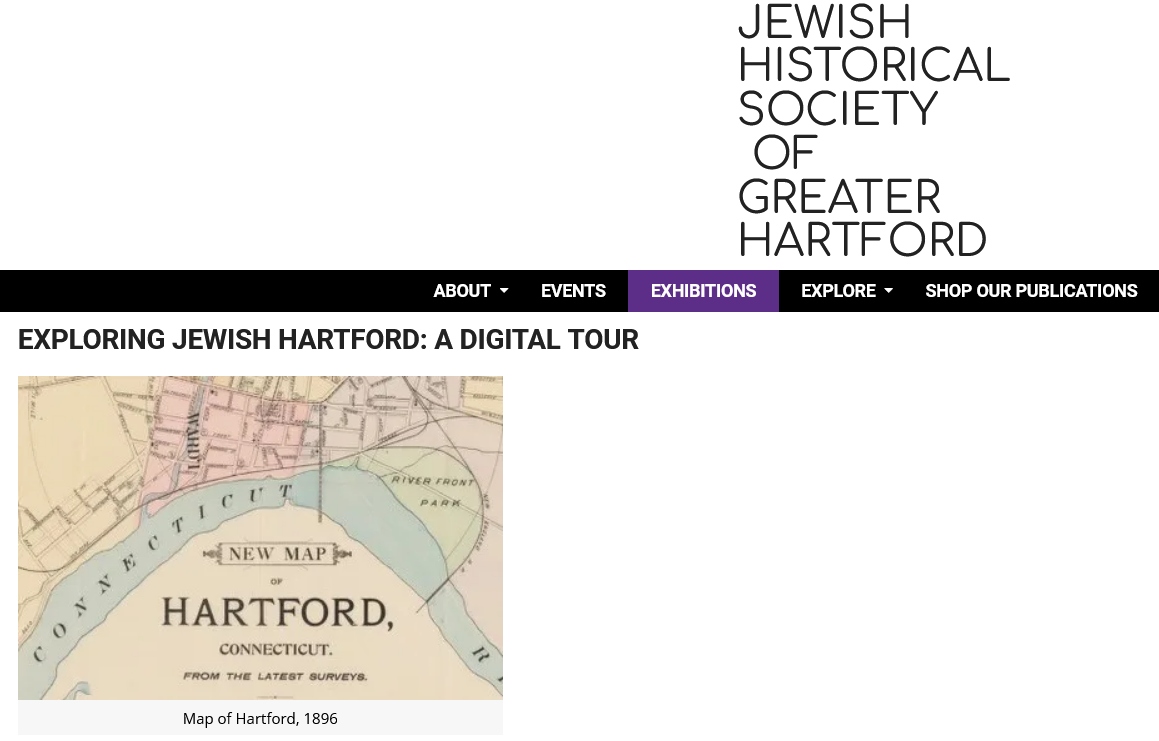
Online exhibit: Exploring Jewish Hartford. Jewish Historical Society of Greater Hartford.
D3: INQUIRY ACTIVITY
1) Begin the inquiry by introducing the compelling question and then breaking the class into three groups. Each group will conduct an image/document analysis using the Library of Congress Primary Source Analysis worksheet or a similar open-ended technique, considering one of the following sources:
- Pushcarts on Front Street (Source #1)
- Chicken market, Charles Street, Hartford, c 1910 (Source #2)
- Report card from Arsenal School, Hartford, 1919 (Source #3)
2) Have students share their observations and new questions within their groups and then with the rest of the class. Use the “Cultural Context and Vocabulary” slide to clarify any unfamiliar terms and build understanding of the sources the students have examined.
3) Together as a class or in smaller groups, examine the 1910 census sheet covering part of the Front Street neighborhood (Source #4). What information does the census provide us as historians? What can you learn about the people living in the neighborhood at this time? What observations can you make? Note: If students have trouble reading or understanding the headers for the census, the ones that are most pertinent to this lesson are listed below, and you can find an annotated version of the document here.
- Location (address)
- Name (of each person living at the address; the family name is listed once for the head of the household, then other members have a line and then first name)
- Relation (within the household, typically familial relationships)
- Personal Description (sex; color or race; age; single/married/widowed/divorced; number of years married; mother of how many children, born and now living)
- Nativity (place of birth of the individual and his/her father and mother)
- Citizenship (year immigrated; naturalized or alien)
- Whether able to speak English; or, if not, give language spoken
- Occupation (trade or profession; general nature of industry; whether employer, employee, or independent worker; if an employee, whether out of work at the time and for how many weeks in the previous year)
- Education (whether able to read; whether able to write; if attended school this year)
4) Individually or in pairs, have students explore the “New Immigrants Make the East Side Home” and “Taking Care of the Community” sections of the online exhibit, Exploring Jewish Hartford.
5) Using evidence from the online exhibit and the primary sources provided, students will reflect on how Jewish immigrants built a community that felt like “home” in Hartford.
D4: COMMUNICATING CONCLUSIONS
- Writing prompt: If you were moving to a new place that was unfamiliar to you, what would be most important for you to make yourself feel at home? Or, if you have moved someplace completely new, what helped you feel most connected to your old home?
- Investigation: Looking around the place where you live, do you see any clues to suggest that a business, community organization, or religious site was created by immigrants, such as its name, language used, or cultural symbols? What countries, languages, or religions are represented? In what ways do you think that businesses or organizations might help an immigrant to feel at home in Connecticut?
- Research: Find out about organizations in Connecticut that work to help immigrants and refugees, such as Integrated Refugee and Immigrant Services or the Connecticut Institute for Refugees and Immigrants. What services do they offer, and what kind of help or support can people give?
ADDITIONAL RESOURCES
Place to GO
Charter Oak Cultural Center, Hartford
Walk New Haven (Grand Avenue and Wooster Square tours especially)
Things To DO
Attend a festival or parade celebrating immigrant heritage in Connecticut.
Look for information about ethnic food stores in Connecticut, such as Mariuchi Grocery Store and the Crown Market in West Hartford; Casa Brasil, Tangiers, or El Mercado in Hartford; Patel Foods Farmers Market and Al Basha in Manchester.
Websites to VISIT
Jewish Historical Society of Greater Hartford
Connecticut Institute for Refugees and Immigrants
Integrated Refugee and Immigrant Services
Articles to READ
ConnecticutHistory.org:
- “Tradition and Transformation Define Hartford’s Jewish Community” by Betty N. Hoffman
- “Sophie Tucker, The Last of the Red-Hot Mamas” by Jeannine Henderson-Shifflett
“Jews in Hartford: Making Their Presence Known” by Marsha Lotstein. Connecticut Explored, Summer 2005.
“The Handkerchief Brigade” by Betty Hoffman. Connecticut Explored, Fall 2015.

